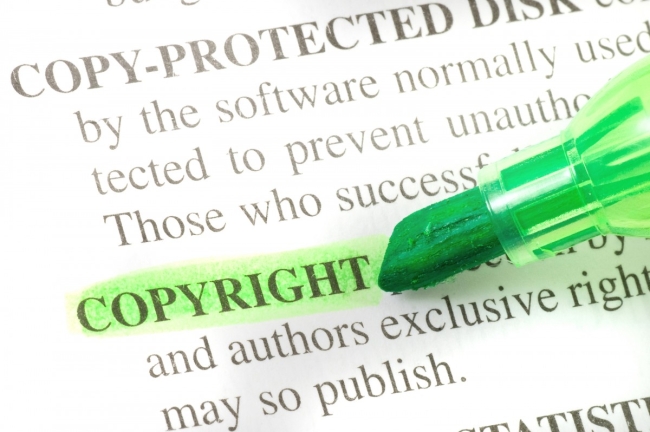You have /5 articles left.
Sign up for a free account or log in.

Istockphoto.com/Wakila
When three publishers sued Georgia State University for sharing excerpts of textbooks with students at no charge 10 years ago, librarians and faculty members took notice.
The lawsuit was a big deal for universities offering "e-reserves" to students -- free downloadable course materials that often included scanned pages from print textbooks.
GSU (and many other higher ed institutions) believed that this use of publisher content was within the bounds of "fair use" -- a much debated tenet of copyright law. Oxford University Press, Cambridge University Press and Sage Publications disagreed. The publishers argued that this use of copyrighted materials without a license constituted infringement.
Then the courts went to work. In 2012, U.S. District Judge Orinda Evans sided largely against the publishers. The court ruled that 43 of 48 alleged cases of infringement were fair use -- a judgment heralded as a victory for higher education institutions and libraries.
But in 2014, the U.S. Court of Appeals for the 11th Circuit reversed this decision, throwing the case back to Judge Evans. In 2016, Judge Evans again ruled in favor of Georgia State. Using a new formula for calculating fair use, Evans ruled that 44 of the 48 alleged cases of infringement were in fact permissible.
In 2017, the publishers appealed again, and again, the 11th Circuit said Evans got it wrong.
In an opinion published this month, the appeals court said that Judge Evans should not have applied a “mathematical formula” when analyzing whether or not something constituted fair use, and instead should have performed “a qualitative consideration of each instance of copying in the light of its particular facts.”
Kevin Smith, dean of libraries at the University of Kansas, wrote in a blog post this month that the circuit court took an “astonishingly long time” to issue its ruling on the appeal -- 449 days. “I wish I could say that the wait was worth it and that the ruling adds to our stock of knowledge about fair use,” said Smith. “Unfortunately, that is not what happened.”
The ruling “does not fundamentally alter the way fair use analysis has been done throughout this case,” said Smith. If there is a third trial, Judge Evans may find more than four or five cases of infringement, “but the big principles that the publishers were trying to gain all lost. There will be no sweeping injunction, nor any broad assertion that e-reserves always require a license.”
“The saddest thing about this case is that, after 10 years, it continues to chew over issues that seem less and less relevant,” said Smith. “Library practices have evolved during that time, and publishing models have changed. Open access and the movement toward open educational resources have had a profound impact on the way course materials are provided to students. So the impact of this case, and of any final decision, if one ever comes, will be negligible.”
Barbara Fister, professor and librarian at Gustavus Adolphus College (and a blogger for Inside Higher Ed), agreed that the landscape had changed since the case against GSU was first brought a decade ago. Librarians are rarely the ones providing course materials to students -- now faculty members distribute readings to students. “The defendants in this lawsuit are simply not the alleged offenders anymore,” she said.
Licensing of content has also changed as the popularity of digital content has grown, Fister said. “The idea of paying per use for scholarly materials is growing less and less obvious than when faculty used course packs and libraries handled reserves.”
Fair use determination is “never going to be simple,” said Fister. She said the main outcome of this “decade of legal wrangling” is that “libraries can and should use judgment when making fair use decisions.” And despite what publishers may want institutions to think, it is not the case that “all uses must be paid for just to be on the safe side,” she said.
Jonathan Band, a Washington-based copyright lawyer, said that the most important aspect of the case is the reinforcement of the idea that there is not a mathematical formula that can be applied to fair use. “It is a much more flexible, nuanced standard,” he said.
Band agreed with Smith that the publishers should have dropped the suit a long time ago.
“Looking at the big picture, the publishers should have dropped the suit back in 2009, when GSU abandoned its old fair use policy shortly after it was sued,” said Band. “The new policy it adopted was the same as the policy the American Association of Publishers had blessed at other institutions. The publishers should have just declared victory and gone home.”
The publishers aren’t likely to give up this fight, said James Grimmelmann, professor of law at Cornell University's law school. But like others, he believes that the outcome “won’t matter very much.” Licensing practices are “worked out much more by negotiation” now than they were in the past, he said.
Regardless, the publishers and Georgia State are poised to keep fighting.
Maria A. Pallante, president and CEO of the American Association of Publishers, said in a statement that she was pleased that the 11th Circuit had unanimously reversed the district court’s “erroneous findings.”
Kerry Heyward, a lawyer for Georgia State, said, “We remain convinced that GSU has abided by the copyright law of fair use in providing small excerpts for student use in the educational environment and stand ready to demonstrate that fair use in accordance with the 11th Circuit’s decision.”








